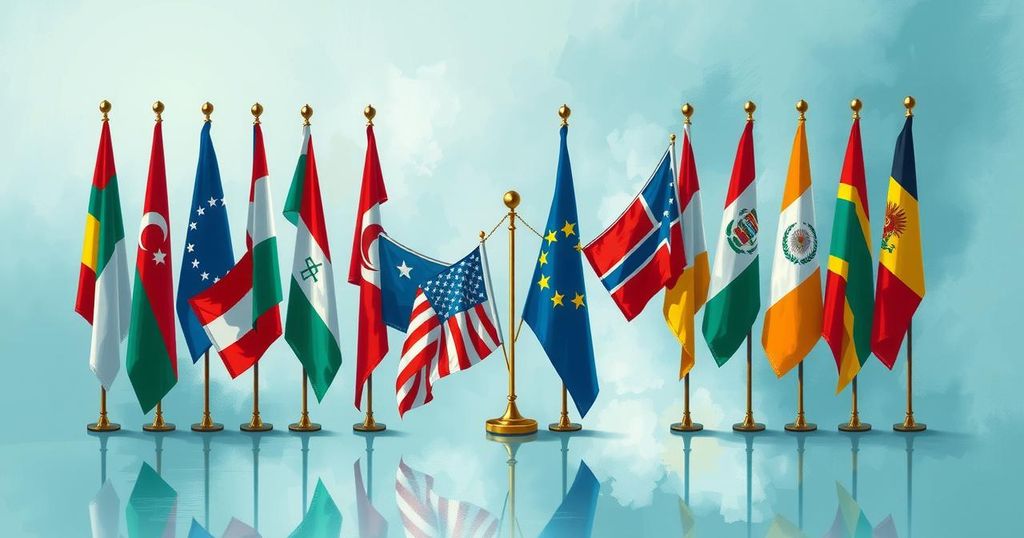Trump Considers Cutting China Tariffs Ahead of Key Trade Discussions

President Trump is contemplating reducing China tariffs from 145% to 80% prior to key trade talks in Switzerland. He urges China to open its markets, suggesting that closed markets are unviable. Concerns over tariffs affecting consumer goods persist. The meetings this weekend mark an essential step in US-China relations since the initiation of the trade war.
US President Donald Trump is considering reducing tariffs imposed on China from an astounding 145 percent down to 80 percent. This potential cut comes ahead of significant discussions scheduled this weekend between high-ranking US and Chinese trade officials in Switzerland. The talks represent the first major diplomatic engagement since the tariffs were enacted, igniting a trade war that has impacted both nations profoundly.
In a post shared on Truth Social, Trump emphasized the need for openness in trade, declaring that “closed markets don’t work anymore.” His comments reflect a shift in tone as he called for greater access to US markets for China, saying that this change would benefit them significantly.
Tariffs have raised concerns about their effects on consumer goods prices and overall supply chains. China, the world’s largest exporter, has been particularly hard hit by these tariffs. When Trump announced his “Liberation Day” tariffs earlier this year, China responded with its own levies, which he criticized as disrespectful. This retaliatory exchange pushed tariffs on US goods to as high as 125 percent.
Just last week, in an Oval Office address, Trump hinted at the possibility of lowering tariffs, mentioning, “I could lower the 145 percent rate if the talks go well this weekend.” However, this perspective seemingly contradicts his previous reluctance to adjust tariffs unless meaningful discussions occurred. Now, he appears to be softening his stance, suggesting a potential strategy shift.
His administration acknowledges the impracticality of maintaining such high tariffs, which essentially function as a trade embargo. The challenge remains reconciling Trump’s desire for revenue from tariffs, which helps fund tax cuts, against the need for lower tariffs to create more trade opportunities for US products in the global market.
Furthermore, despite a strong push from his team to isolate China economically, imposing high tariffs on allied countries complicates efforts to build a cohesive trade alliance. White House economic adviser Kevin Hassett expressed optimism about the upcoming summit, stating, “Everything that’s been going on… is very promising to us,” noting improved respect and collegiality between both parties.
As this pivotal meeting approaches, the calls for tariff reductions and increased trade access will likely be major discussion points, potentially altering the future face of US-China trade relations. The situation remains highly dynamic, with implications for both economies hanging in the balance.
In summary, President Trump’s proposal to reduce tariffs on China from 145 percent to 80 percent, just ahead of important US-China trade discussions in Switzerland, represents a notable shift. While he recognizes the need for more open markets, the administration’s challenge will be balancing tariff revenues with the necessity of fostering trade relationships. There is cautious optimism from economic advisors regarding the outcome of the upcoming talks, which could significantly impact future trade dynamics between the two nations.
Original Source: www.abc.net.au








